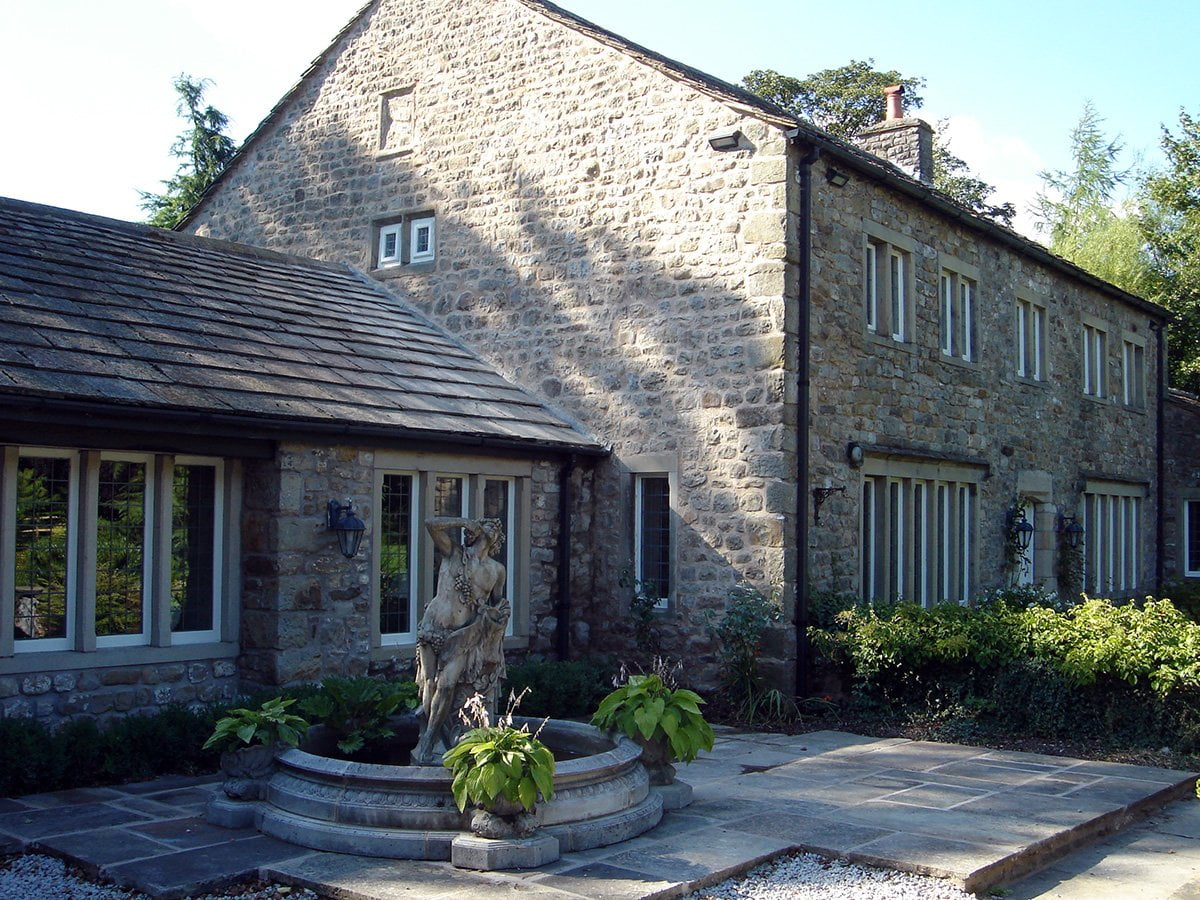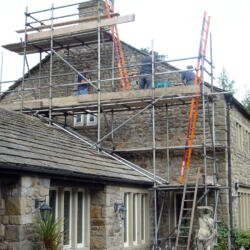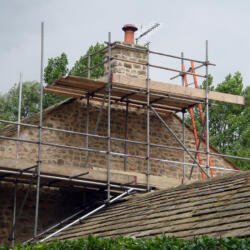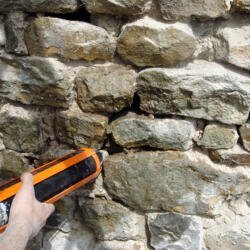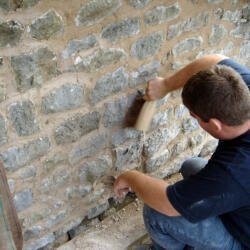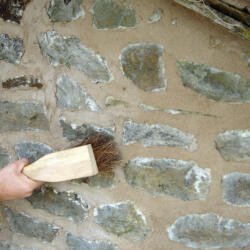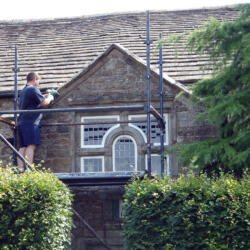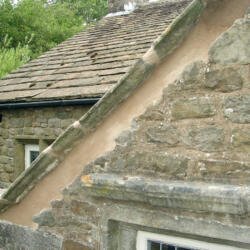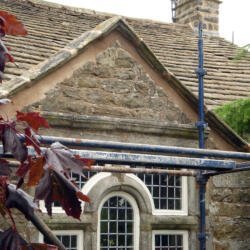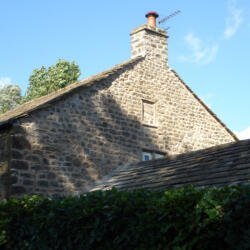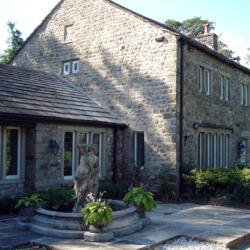
This project involved Lime Pointing a Gable elevation to this Grade II Listed Farmhouse in Bolton-by-Bowland, Near Clitheroe, Lancashire. Our Restoration Team worked on this project for 4 weeks. The house is located between Clitheroe & Gisburn on the Forest of Bowland border.
This listed building in Bolton-by Bowland had water ingress issues caused by then cement based pointing used. The problems with using a cement based mortar for pointing traditional sand stone buildings are that the cement mortars are hard and not flexible. As the listed building moves thermally during the winter and summer months the hard non-flexible cement mortar cracks and de-bond from the sand stone masonry units.
An access scaffold was erected to the gable elevation. The scaffolding was saddled over a existing stone slate roof. The scaffolders laid bearing boards down on the traditional stone slate roof to prevent the slates from cracking. The scaffolding had an internal access ladder to the decks. We used Hessian & visqueen sheets to protect the Lime Pointing from the weather.
After we removed the existing cement pointing, we used a Lime Putty based mortar for filling any larger voids in the wall. A Natural Hydraulic Lime (NHL) was used for the Lime Pointing Mortar mix. Hydraulic lime mortar does have a slight hydraulic setting action hence the name. This hydraulic setting action is a long way off the setting strength of a cement based mortar. The lime mortar still depend highly on the carbonation of the lime element of the mortar. If the lime pointing mortar dries out prior to the carbonation process happening the lime mortar has failed. Once failed the lime mortar will turn a much “whiter” colour than the other pointing mortar.
A brush was used to beat the pointing to create a weathered look. The Lime Pointing needs to be protected for the weather elements. There are quite a few way of finishing lime mortar pointing. the traditional way is as pictured by “beating” back with a stiff churn brush or bassine brush. This opens up the surface area of the lime pointing mortar to allow more evaporation of the water. This also helps with the evaporation of any moisture within the wall. A the lime mortar pointing can crack slightly sometimes as it is drying the “beating” back with the churn helps consolidate any small cracking or crazing. Another traditional masons technical is to scrap back the pointing with a steel tool, this gives a more open texture to the pointing.

The Lime Pointing when brushed gives a natural blend to the existing Stonework. Our Restoration Contractors working in Clitheroe, Lancashire are all skilled masons in masonry work. we work throughout the Ribble Valley on Listed Building and Traditional houses and cottages. The Ribble valley a large number of traditional listed building in the out lying areas such as Gisburn, Sawley, Bolton-by-Bowland, Whalley all these areas have original stone built properties with solid wall construction. Most Builders are not experienced or skilled in Lime Pointing or Lime Rendering. Contractors have different skills in certain areas of construction. Our Restoration Contractors are a skilled workforce in the Ribble Valley area.
Part of the Restoration works to this Grade 2 Listed Building in Bolton-by-Bowland Nr Clitheroe, Lancashire was to restore the copings stones to the porch roof. The coping stones are said to have been sourced from near by Sawley Abby. The roof of the stone porch is made up of sand stone roofing slates. We carefully removed the coping stones from the roof and stored on the access scaffolding. As the stone coping are very heavy we used a lifting plan. The stone roofing coping had been installed with cement mortar and not lime mortar, causing water ingress.
We removed the cement pointing from below the stone slates and used a Lime Mortar for re-bedding the coping stones. They were also pointed using Lime Mortar. The Hydraulic lime pointing mortar was mixed with a local Waddington Fell sand. This gives the lime mortar a slightly red colour. The hydraulic lime was a NHL 3.5 which is ideal for high levels of exposure to the elements.
When our Restoration Contractors work on listed buildings such as this one in the Ribble Valley, they work closely with the local conservation officer to ensure that all the work carried out meets the traditional standards of the English Heritage and local Authorities.
